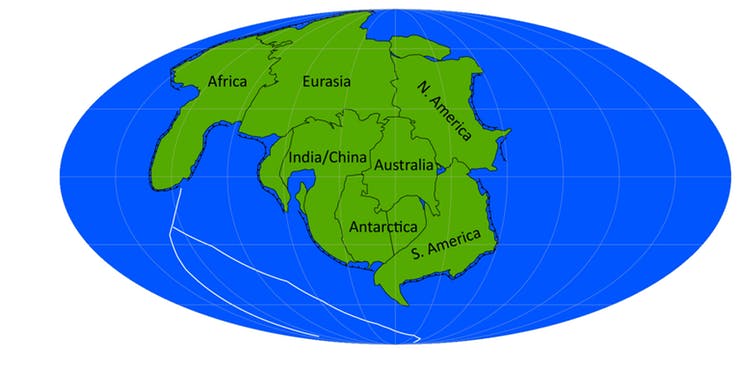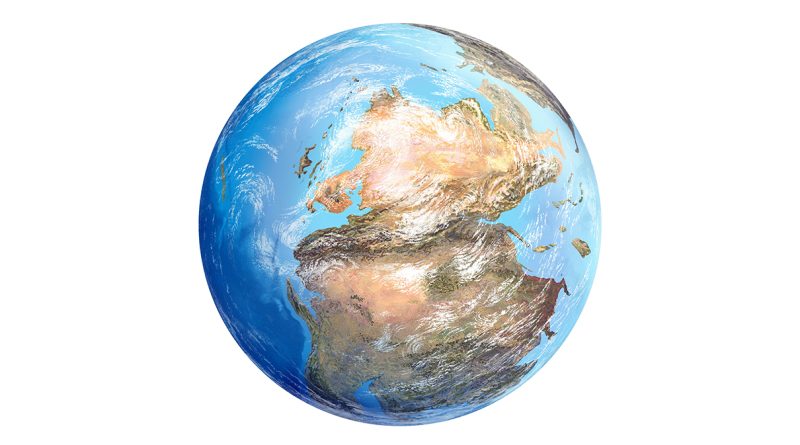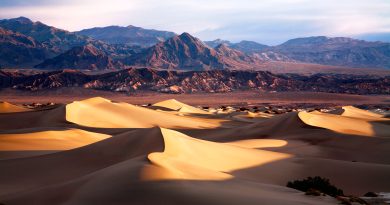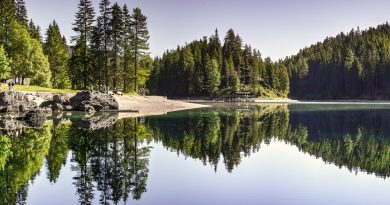In the far future, there will only be one continent on Earth. This could be how it looks
The solid crust we walk on is made up of broken pieces, just like the shell of an egg that has been broken. A few centimeters per year is how fast these pieces, called tectonic plates, move around the planet.
Every once in a while, they meet up and form a supercontinent that lasts for a few hundred million years before breaking apart.
The plates then move away from each other and separate, and it takes another 400–600 million years for them to come back together.
The last supercontinent, Pangea, came together about 310 million years ago and started breaking up about 180 million years ago. It has been said that the next supercontinent will form in 200–250 million years. Since we are about halfway through the scattered phase of the current supercontinent cycle, this means that the next supercontinent will form in 200–250 million years.
How and why will the next supercontinent come to be?
There are four main ways that the next supercontinent could come together: Novopangea, Pangea Ultima, Aurica, and Amasia.
How each one forms depends on different things, but they all have to do with how Pangea broke up and how the continents still move today.
The Atlantic Ocean was made when Pangea broke apart, and it is still opening and getting bigger today. Because of this, the Pacific Ocean is getting smaller and smaller.
Along the edges of the Pacific, there is a ring of subduction zones called the “ring of fire.” This is where ocean floor is pushed down under continental plates and into the center of the Earth. There, the old ocean floor is reused and can go into volcanic plumes.
The Atlantic, on the other hand, has a large ocean ridge that makes new ocean plates, but it only has two subduction zones: the Lesser Antilles Arc in the Caribbean and the Scotia Arc between South America and Antarctica.
1. Novopangea
If we assume that things will stay the same, so that the Atlantic will continue to open and the Pacific will continue to close, the next supercontinent will form in the opposite direction of Pangea.
The Americas would crash into Antarctica, which was moving north, and then into Africa and Eurasia, which had already crashed into each other.
Novopangea, or Novopangaea, is the name of the supercontinent that would form at that time.

2. Pangea Ultima
But the opening of the Atlantic may slow down and even start to close in the future. The two small arcs of subduction in the Atlantic could possibly spread all along the east coasts of the Americas, causing Pangea to reform as the Americas.
Europe and Africa are brought back together to make a supercontinent called Pangea Ultima. A super Pacific Ocean would be on all sides of this new supercontinent.

3. Aurica
But if new subduction zones form in the Atlantic, which may already be happening, both the Pacific and Atlantic oceans could be doomed to close. So, a new ocean basin would have to form to take their place.
In this case, the new ocean would form when the Pan-Asian rift, which runs through Asia from west of India to the Arctic, opens up. Because of this, the supercontinent Aurica was made.
Australia is moving north, so it would be in the middle of the new continent. East Asia and the Americas would be on either side of the Pacific, closing it off.
As the Atlantic closes, the European and African plates would then meet up with the American plates again.
4. Amasia
The future of Earth will be very different in the fourth scenario. Several of the tectonic plates are moving north right now, and Africa and Australia are two of them. This drift is thought to be caused by oddities left by Pangea in the mantle, which is deep inside the Earth.
Because of this northward drift, it’s possible that all the continents, except Antarctica, will keep moving northward. This means that they would eventually form a supercontinent called Amasia around the North Pole.
In this case, the Atlantic and Pacific Oceans would stay mostly open.

We think that Novopangea is the most likely of these four ideas.
It makes sense based on the way continental plates move now, while the other three theories assume that something else is going on. For Aurica to form, there would have to be new subduction zones in the Atlantic, the opening of the Atlantic would have to close again for Pangea Ultima, or Pangea would have to have left strange features inside the Earth for Amasia to form.
When we look into the tectonic future of the Earth, we have to push the limits of what we know and think about the things that shape our planet over long periods of time.
It also makes us think about the whole Earth system and makes us wonder, for example, what the climate of the next supercontinent will be like. How will the flow of the ocean change? How will life change and move forward?
These are the kinds of questions that push the limits of science further because they push the limits of our imagination.



